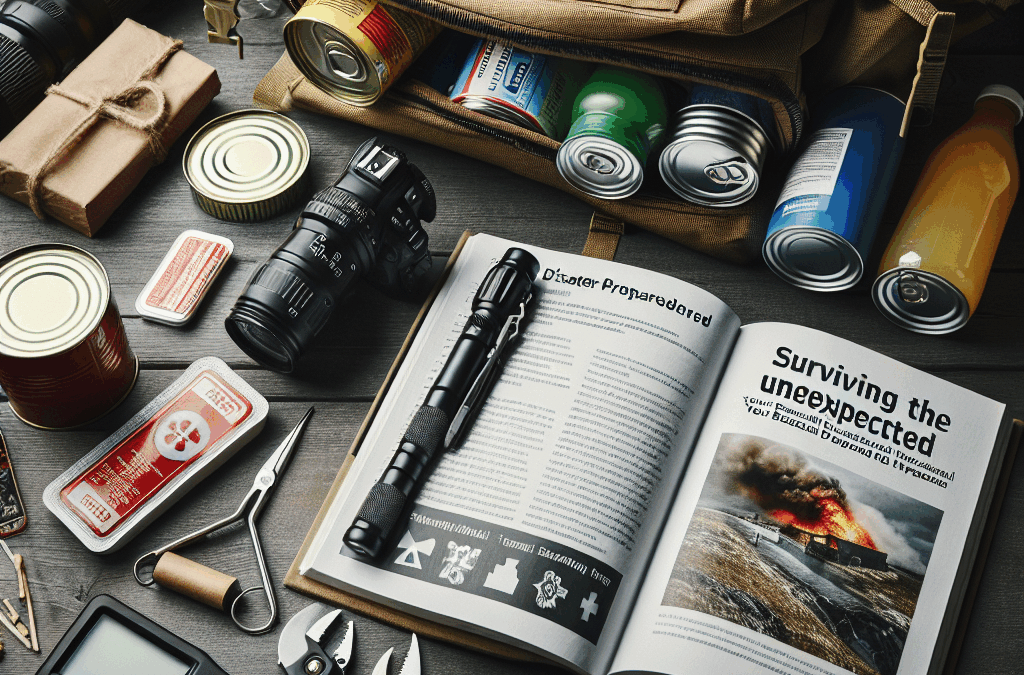Disasters can strike when least expected, leaving chaos in their wake. Whether it’s a natural calamity like an earthquake or hurricane, or man-made emergencies such as chemical spills, understanding the risks you face is the first step toward preparedness.
*Understanding the Risks: Identifying Potential Disasters in Your Area**
Every region has its own set of vulnerabilities. Begin by assessing your surroundings—are you located in a flood zone? Is your area prone to wildfires or tornadoes? Local government websites often provide hazard assessments that detail risks specific to your community. Familiarize yourself with historical data on disasters that have affected your area. Engaging with neighbors and local emergency management agencies can also yield valuable insights into what to expect and how best to prepare.
*Building Your Emergency Kit: Essentials for Every Household**
Once you’ve identified potential threats, it’s time to assemble your emergency kit. This should be a well-stocked collection of essentials designed to sustain you and your family for at least 72 hours during a crisis. Start with non-perishable food items—think canned goods, energy bars, and dried fruit. Don’t forget about water; aim for one gallon per person per day.
Other critical components include:
**First Aid Supplies:** Bandages, antiseptics, pain relievers.
**Flashlight and Batteries:** Power outages are common during disasters.
**Multi-tool:** A versatile tool can assist in numerous ways.
Thank you for reading this post, don't forget to subscribe NOW for FREE!
**Personal Documents:** Keep copies of important identification and insurance information.
**Clothing & Blankets:** Extra layers can keep you warm if temperatures drop unexpectedly.
Consider special needs as well—infants might require formula and diapers, while pets need food and medications too! Regularly check and refresh your kit every six months; it’s easy for items to expire or become outdated.
*Creating a Family Emergency Plan: Communication and Evacuation Strategies**
An emergency plan is essential for ensuring everyone knows what steps to take when disaster strikes. Gather your family members together and discuss potential scenarios—establish clear roles so each person understands their responsibilities. Designate a meeting point outside of your home where everyone can regroup if evacuation becomes necessary.
Communication is key; ensure each family member has access to important phone numbers written down or saved in mobile devices. With many people using smartphones today, consider apps that allow for group messaging even under limited connectivity circumstances.
Practice drills! Simulating emergencies helps familiarize everyone with the plan, making reactions instinctual rather than panicked when real situations arise.
*Staying Informed: Resources and Tools for Real-Time Updates**
In our fast-paced world, information is power—especially during crises. Equip yourself with reliable sources of real-time updates about impending disasters or emergencies affecting your area. Smartphone apps like FEMA or NOAA Weather provide timely alerts tailored to your location.
Local news stations often broadcast vital information through various media channels; tune into radio broadcasts if electricity fails or internet access is compromised. Consider investing in an NOAA weather radio—it could be the difference between safety and danger when seconds count.
Ultimately, being prepared fosters resilience within families and communities alike. By understanding risks unique to your environment, assembling essential supplies, creating actionable plans, and remaining informed through reliable resources—you arm yourself against the unexpected challenges life may throw at you! Embrace these preparations not just as tasks but as vital steps toward safeguarding lives!






